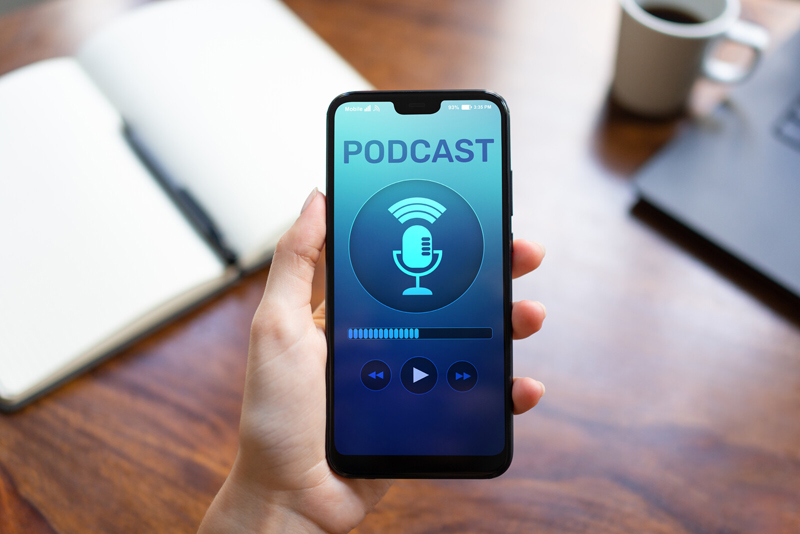Podcasting has been around for over a decade and recent reports indicate that the popularity of this digital media format is growing. Digital transcription service providers convert podcasts into text, making these digital audio files more accessible when they are published online.
The New York Times reported on a 2019 Infinite Dial survey which found that:
- Compared to 2018, the number of people in the United States who have listened to at least one podcast in their lives increased by 20 million this year, with an additional 14 million weekly listeners.
- Listeners over age 55 who were slow to adapt to podcasts, are catching up
- In 2018, 13% of people age 55 identified themselves as monthly podcast listeners
- In 2019, 17% of those in this demographic have started listening to podcasts
- 40% of people between the ages of 12 and 24 listened to a podcast in February, a 10% increase from 2018
So what are the factors driving the popularity of podcasts?
- Engaging format: Podcasts are an easy and digestible media form, and you can multitask while listening to them. Many people listen to podcasts when they are engaged in routine tasks like preparing a meal, driving or walking, running or riding a bike. In fact, this is what makes podcasts appeal to today’s fast-paced millennials who listen in through their smartphones, tablets, or other mobile devices.
- The intimacy factor: Consistently published podcasts with good content create an intimacy where the listener trusts and values the opinions of the host. Podcasts have a narrowly focused topic and make deeper connections with niche interests. People download and listen to podcasts within a short time after they are recorded and published. Most listen alone, and not along with others. This makes each listener feel more connected with the host.
- Content to suit listeners’ specific needs: There are podcasts available on almost every topic. They come in various formats such as interviews, conversations, educational sessions, solo-casts, and fiction and non-fiction storytelling. Consumers can choose the content they prefer and avoid excessive information overload with short podcasts. Whether its politics, science, or fiction, people can find podcasts that fit their requirements.
- Podcast listening apps: Podcast listening platforms or apps that allow consumers to listen to their favorite podcast. As a Forbes article explains, apps present consumers with a list of podcasts that they can choose to subscribe to. By subscribing to a show, they can maintain a list of their favorite podcasts and get notified about new episodes. Popular examples of podcast apps include the podcast app for iPhone, Overcast, Stitcher, Castbox, Breaker, and Google. In addition to the ability to play, pause, subscribe, and add to a playlist, apps can be speeded up to listen faster.
- Informative: Podcast creators/hosts are generally experts on their topic and interested in sharing as much information as possible with their audience. Podcasts offer in-depth information about a topic that wouldn’t be available in a radio or TV program, news story, or blog.
With podcast growth exploding in the United States, this digital media format has become a compelling and cost-effective option to market businesses. They do not require a heavy investment and initial episodes can be recorded on a smartphone or tablet. Tips to leverage the power of podcasts:
- Determine your motive: Podcasts can be used for different purposes – to increase authority, grow a business, or grow the audience. To develop the right content, you should determine the purpose of your podcast, and consider your expertise and target audience.
- Be prepared to ensure consistency: If you want to attract and retain your targeted audience, you need to post episodes of your podcast regularly and consistently. One option is to create a calendar and plan your time to stick to it.
- Stay focused: Stay focused on the needs and preferences of your audience. Successful podcasts have a narrow, focused topic. Learn about your audience’s problems or what excite them, ask your audience questions, listen to their concerns, and focus on these.
- Ensure a good intro: Your introduction should include short personal introduction, a brief overview of what your audience can expect in the podcast, and a glimpse of forthcoming episodes. It’s also important to remind listeners to like, comment, share or subscribe to your podcast.
- Use proper equipment: Essential equipment to host a podcast include: a computer, microphone, audio interface, mixer, pop filter to minimize/prevent plosives, headphones, and recording and editing software. Using the right equipment will make a big difference to quality.
Once your podcast has been successfully launched, transcribe it to enhance visibility on search. Providers of audio transcription services can convert the audio recording into a text document. This will make your podcast accessible to a wider audience. A good title and the right keywords are important to get the attention of search engines. Adding subtitles and captions can also enhance search engine optimization. Sharing your content on social media will help your audience grow.




